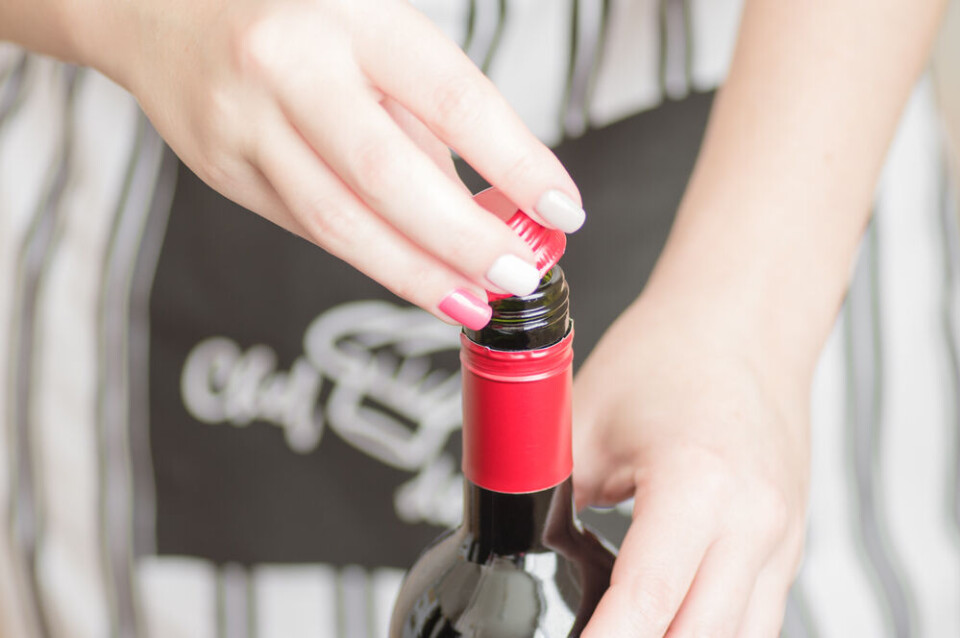-
Why meat is becoming less popular in France
A new poll shows the alternative proteins people are choosing, and why
-
McDonald’s expansion in France: a restaurant 'within 20 minutes' of all homes
Fast-food chain primes itself to enter rural markets
-
Why French health officials want schools to stop serving soya products
Health agency recommends such products are banned from canteens
From corks to screw caps: French wine bottles are changing
Screw caps are winning out on ‘drinkable’ wines and recyclability, but are still facing resistance among premium wines

Increasing numbers of wine producers in France are putting screw caps instead of corks on their wine bottles as part of a trend that has already caught on in many other countries, including the UK and Australia.
For years screw tops were derided as a symbol of a lesser bottle of wine. However this is now changing - even though they are still usually seen on cheaper bottles of wine, sold at €6 or less.
This includes those wines that could be described as “light, fruity, drinkable”, said Anthony Aubert, a wine negotiator in the Languedoc region, to FranceInfo. “For the main market, it’s great.”
Screw caps are also gaining in popularity in busy restaurants, he said.
“Some do not even want corks for their house wines by the glass, because the barman has to work quickly. At peak service times, when the terrace is full, they do not want to lose a minute uncorking a bottle,” said Mr Aubert.
Corks v screw tops: Less popular in France?
France still appears to be behind the trend, however.
Figures from market research Euromonitor show that screw tops account for 34% of the wine bottle tops sold worldwide, but the figure is 24% in France. This is, however, a significant rise from the 14% of 2017.
“In France, Spain and Italy, it is more difficult,” said Catherine Fontinha, Head of Marketing at Amcor, seller of the ‘Stelvin’ screw cap.
In contrast, the top has become increasingly popular in other countries, including Australia and New Zealand, Germany, the UK and Scandinavia. “In Australia, they don’t even know how to serve a [bottle with a] cork,” said Mr Aubert.
‘Healthy competition’
Franck Autard of cork producer Amorin does not agree that corks are losing out to increasing numbers of screw tops, especially for higher-end wines.
“These figures are highly exaggerated,” Mr Autard said. “The house is not on fire, we are continuing to gain market share.”
He said there is still "healthy competition" between the two types of tops, with corks still used for ‘premium wines’ and screw tops used for ‘entry-level’ wines.
"Beyond €15-20, people do not want [screw tops]," said Pierre Flament, a wine merchant based in Rueil-Malmaison (Hauts-de-Seine) who specialises in French wines.
Of the 400 wines in his shop, only six of them have screw caps. He added that many consumers grimace when seeing a screw top, and still associate it with lesser wine, despite its growing popularity.
However, he added that he personally has nothing against it. "It is true that corking is the best way to age a wine,” he said. “But with fast-drinking wines, there is no difference. And some winemakers are making extraordinary wines, and using screw caps.”
‘New wine’ and recycling
Amcor is now focusing its screw tops on “new wine, natural wine, whites and rosés, and even Pinot Noir”, Ms Fontinha said. Low- and no-alcohol wines are also a growing market.
Screw tops are also gaining in popularity among newer generations of wine drinkers, who are also concerned with the environment and the recyclability of their bottle tops.
Mr Autard agrees that cork recycling still has a long way to go. He said that just 20% of corks are recycled today, but he believes that they should be collected and recycled in supermarkets, in the same way as batteries.
Aluminium caps, on the other hand, are disposable in most recycling bins, even though the plastic seal inside - around 10% of the cap's mass - ends up being incinerated.
Made in France
Despite France’s apparent reticence towards the screw top it was actually a French invention.
Le Bouchage Mécanique, a Châlons-sur-Saône (Saône-et-Loire) based company, was the first to create an aluminium shell cap - called the Stelcap - which had an oxygen-permeable seal. It was initially used for spirits then later adapted for wine bottles.
Producers in Switzerland were among the first to see the benefits of the design, viewing it as a solution to the problem of ‘corked’ wine (caused by the chemical trichloroanisole, TCA).
The availability of good quality corks dropped when a crisis hit the cork sector in the early 2000s meaning more wine began to be ‘corked’. As a result, winegrowers started to look for alternatives to avoid waste.
"That's when things really started to take off,” said Ms Fontinha.
But even newer innovations may yet impact the market, eclipsing the simple ‘cork vs screw top’ debate completely. The bottles themselves are now facing competition from other types of containers, including the ‘bag in a box’ type, and even cans.
Read also
Lidl’s €1.89 bottles of Bordeaux spark protests in south-west France
Should you be worried about pesticides in French wine?
























